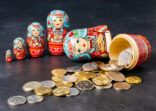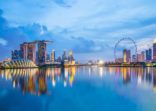A country’s water‑energy‑food balance can be a good indicator for the likelihood of greater environmental regulation, so understanding how these three components interact provides a way for investors to understand the impact of environmental dynamics on company performance, argues Maria Elena Drew, T Rowe Price’s director of research for responsible investing, in a recent report.
She calls the interaction the “WEF Nexus”, and identifies water as the most crucial component, because water scarcity has a direct impact on food supply and power generation.
Water scarcity is also “often a catalyst for swift regulatory intervention, as the mismanagement of water resources is difficult to reverse”.
Moreover, in the next two decades, the number of people exposed to water scarcity is expected to double from the current 1.6 billion, largely due to economic growth and urban migration. She believes the most vulnerable regions are Asia, Latin America and the Middle East.
Drew uses China as an example of a WEF Nexus imbalance that has led to environmental reform and regulation. Regulation in China has tightened as the government encouraged a restructuring of the country’s industrial sector that sidelines sectors that “overextend China’s natural resource balance without a commensurate social gain”.
In 2009, the Chinese government targeted 10 industries that needed to “close the loop” and “go circular”: coal, power, steel, nonferrous metals, petroleum and petrochemicals, chemicals, building materials, paper, food, and textiles. Companies in these sectors were told to reduce waste and improve energy and water efficiency through their entire production cycle as well as consider the life cycle of their products.
WEF and investment
How can these strictures be integrated into the investment process?
T Rowe Price takes the apparel and textile sector as an example. When looking for investments the firm considers factory locations and modernization, access to water permits, as well as other environmental factors.
“On average, we have identified larger‐sourcing companies as medium‐term losers. These have incurred greater costs associated with ramping up capacity outside of China,” wrote Drew.
“We [also] expect companies exposed to heavy industry to face heightened operational risks in the years ahead, particularly in regions that are not meeting pollution targets.”
The WEF Nexus is part of the firm’s ESG process, and responsibility for integrating all ESG factors lies with its research analysts and portfolio managers. These factors are considered in tandem with traditional investment criteria, said a firm official in an email reply to FSA.
“We have built a proprietary model that systematically and proactively screens the responsible investing profile of an investment called the Responsible Investing Indicator Model (RIIM),” according to the official. The model uses data from internal databases, company reports and select third-party vendors.
Of course, ESG has now become an essential part of the investment process — or at least the marketing material — of many funds. Some argue that elements of the ESG proposition — especially governance — are important inherent drivers of corporate financial performance and shareholder returns, and others are styled as “impact investing”, with stated objectives to do social good as well as achieve investment earnings.
Out-performance of sustainable funds remains a matter of debate. For example, the water funds below all use the MSCI World Index as a benchmark, against which they have all under-performed on a three-year cumulative basis in US dollar terms. All products had higher annualised volatility than the MSCI World except the Pictet fund.
Water themed funds vs their benchmark MSCI World, 3 years


















